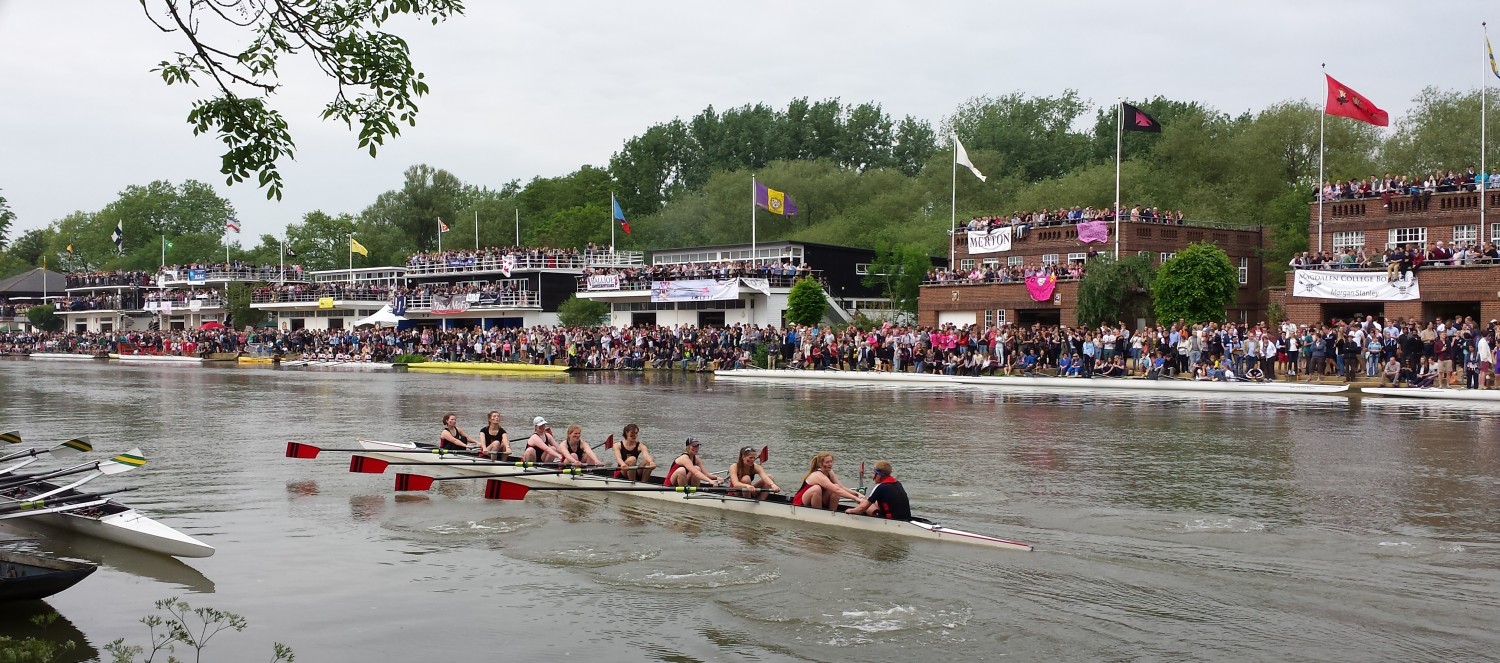Taking the brakes off – five ways to speed up your boat
By Howard Aiken
I’ve written previously about the innovative work done by the GB Cyling team on the importance of marginal gains and how this might begin to translate to rowing (http://bit.ly/1ihUbYO) . It is as true in rowing as in any other sport that important races are often won or lost by inches, so any legal change which offers even small improvements in performance is worth considering.
In this blog, I’m going to touch on four aspects of rowing technique or crew selection which any crew or coach can check on to make sure that they are getting the best boat speed they can for the effort they are putting in. Perhaps because it is easier to see these issues from outside the boat than inside it, or because crews can sometimes settle into a particular way of rowing to correct some other problem, these training points are by no means confined to beginners or novice boats.
- Blade depth. Some crews aquire the habit of rowing ‘deep’, with both the spoon and a significant part of the loom below the surface of the water. Each submerged loom creates a ‘bow-wave’ as it moves through the water and the drag caused by the bow wave acts as a brake on the boat. (See http://bit.ly/1huDCF5 for more detail). The crew are therefore wasting precious energy on making these waves rather than moving the boat. Get the crew to understand that a) the blade naturally floats with its upper edge above the water b) they can reduce the depth of the blade during the drive phase if they focus on dropping the blade gently onto the water before they start the stroke c) if they pull through the drive phase with the blade floating at its natural depth the stroke feels much lighter, because the blade is being used more efficiently.
- Dragging blades. Novice crews often aquire the habit of dragging their blades across the surface of the water from the finish back to the catch. This helps stabilize the boat, reducing the amount of roll, which is reassuring for inexperienced rowers. However, the drag created by eight blades sliding across the water surface, while not as great as the bow-waves referred to above, is still hundreds of times greater than the drag created if they were in the air. [Hint to coaches: My experience is that asking the rower to lower his or her hands on the recovery doesn’t usually work when seeking to correct this error. Telling them to lift the spoon off the water is far more effective. As the Americans would say – “Go figure”].
- Speed into frontstops. The dynamics of boat acceleration are complex and it is a fact that as the crew leaves backstops on the recovery, the boat actually accelerates as kinetic energy is transferred from rowers to boat. However if the rowers hit frontstops hard – rather than decelerating into frontstops – boatspeed is checked, because the rowers (who weigh much more than the boat) are moving in the opposite direction to the boat. A good cue for rowers is the sound made by the wheels of their seat. If the sound is a rising note as they move through the recovery then they are accelerating into frontstops. If the sound is a falling note then they are decelerating into frontstops. A smooth deceleration into frontstops followed by the smallest instant of stillness as the catch is taken and the drive begins, is the most effective way to conserve boat speed. This of course is much easier said than done when working at race pace.
- Cox’s weight. I would advise all crews training for competition to train with as much weight in the boat as possible. If this includes a coxwain who weighs 90 kilos or more then so be it. For the races themselves, however, minimum weight in the boat has to be the rule. Racing with a cox who weighs 20 kilos more than the coxes in the other boats cannot in my view be a competitive advantage, no matter how good a cox he or she may be. Having a choice of competent coxes is of course a luxury unavailable to many crews, but if you do have a choice, use the lightweight cox for competitions.
There is a fifth issue affecting many club boats but which is not an aspect of rowing technique or crew selection – and this is hull blemishes. I remember when I was being coached in sculling, my coach put a single bungee cord around the hull of my single scull. I was shocked by force of the braking effect it produced, simply by disrupting the smooth flow of water over the hull. If there are blemishes which you can feel on a hull when you run your hands along it, if at all possible, get them repaired and smoothed out before the regatta season gets under way. They are costing you far more boat speed than you imagine.
Taken together, the marginal improvements in performance offered by each of these changes can add up to the difference between winning and losing. If you want an introduction to the role of marginal gains here is a short video here: http://bit.ly/SrWeQy
